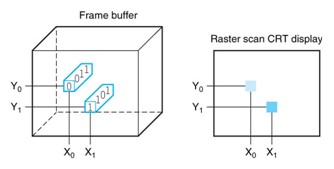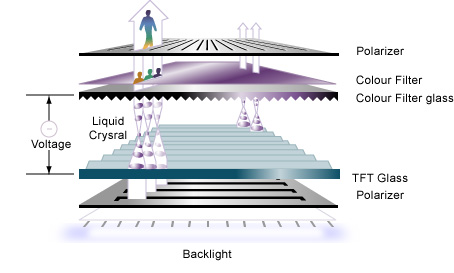Most personal mobile devices use LCDs to get a thin, low-power display. Recently, many monitors are also touch-sensitive.
Liquid Crystal Display (LCD) Monitors
For LCD monitors, the image is composed of a matrix of picture elements, or pixels, which can be represented as a matrix of bits, called a bit map. A color display might use 8 bits for each of the three colors (red, blue, and green), for 24 bits per pixel, permitting millions of different colors to be displayed. A raster refresh buffer, or frame buffer, is used to store the bit map.
| The image to be represented onscreen is stored in the frame buffer, and the bit pattern per pixel is read out to the graphics display at the refresh rate. |

|
The frame buffer is with a simplified design of just 4 bits per pixel. Each coordinate in the frame buffer on the left determines the shade of the corresponding coordinate for the raster scan CRT display on the right.
| Pixel (X0, Y0) contains the bit patter 0011, which is a lighter shade on the screen than the bit pattern 1101 in pixel (X1, Y1). The LCD is not the source of light; instead, it controls the transmission of light. |

|
|
Cindy was on cloud nine (ecstatic) after her boyfriend proposed to her. |